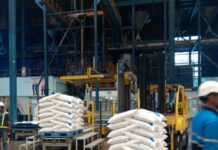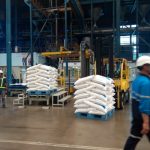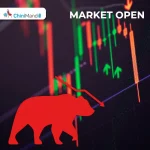Monotony
The week was pretty boring for sugar. Nothing new happened, other than the white premium which traded at more than 150 dollars per ton while experienced traders try to adapt a convincing narrative to explain this explosion. Is it a one-off situation strengthened by panic or an anticipation of a possible shortage of refined sugar which is waiting down the road for us? Honestly, I don’t have the answer to that.
What we know is that the variables that can define the trajectory of prices over the next months – as long as the current harvest is concerned only – change weight and magnitude constantly. It’s been difficult to ponder given the inconsistency and volatility. We have several examples.
The size of the Center-South crop is an important unknown. There is no consensus about the size or productivity. Depending on the interlocutor and the region where the mill is located, the dispersions of opinion are truly striking. Even if we get to a consensual number, which is around between 525-550 million tons of sugarcane today, the next variable is the production mix. This will depend, for example, on the progress (or not) of the discussions in the Senate about the bill which limits the ICMS tax to 17% on fuels.
If it passes, the result will be devastating for the sugar-alcohol sector even if – according to our calculations – the equivalent drop of NY (depending on the exchange rate) can be 50-80 points. However, it’s always worth remembering that the markets can stress beyond that. When panic walks in through the door, good sense jumps out of the window.
Every time there is interference on pricing of any commodity greatly traded at the exchange, the price we pay for artificialities of populist governments – like this current one – is usually pretty steep. The check usually comes in the form of shortage. If Petrobras keeps damming prices, other participants will be driven away from accessing the fuel import market and we might see a rupture all through the chain. Let’s see who will be blamed this time around if that happens.
The difference in gas prices is at 29% this Friday. On the yearly average, the price difference is 12% against the international market. Based on our calculations, the sector has already lost R$ 3 billion (US$ 630 million) of the revenue up to now, thanks to the populist policy adopted by the government.
Hydrous that had been the hope to improve the average price of the mills this year – since at least 20 million tons of sugar has already been fixed – is now waiting for who knows what kind of policy this current administration will adopt.
Going back to the variables that can impact prices – besides the size of the crop discussed above – we also have India that should put a ceiling to exports by 10 million tons of sugar. We believe that for their next crop, which starts in October, this number will hardly be repeated. The ethanol program should speed up the use of more sugarcane for the production of biofuel in that country which, incidentally, was sped up by the increase in oil price on the global market. If between 3.5-4.0 million tons of equivalent sugar were directed to ethanol in this crop, it’s only normal to estimate that Indians will continue to anticipate the target for 2030.
NY closed out the week with July/2022 at 19.30 cents per pound, a decline of 31 points against the previous week, or almost seven dollars per ton. The July/March spread continues to open up, stressing the feeling that the market doesn’t foretell any sugar availability problem. The real has devalued against the dollar by about 1%, closing out Friday at R$ 4.7850. With that, the value of the spot closed out at the equivalent of R$ 2,121 per FOB ton. Compared to the prices since 2004, adjusted by the IPCA, this value has only been topped in 25% of the times, that is, basically in the last quarter.
The prices of the two next crops, using the dollar curve via NDF (Non-Deliverable Forward offered by financial institutions, show average values of R$1,983 and R$1,808 per ton for the 2023/2024 and 2024/2025 crops, respectively. These prices are brought to present value based on the cost of money in Brazil. If we apply these prices to the adjusted curve mentioned in the previous paragraph, they show that at least 1/3 of the times the prices have been above this value for 2023/2024 and 45% of the times above 2024/2025. It’s difficult to justify pricing for the next crops. You might want to wait.
If you think this comment sounds like the previous ones, don’t worry. It’s just that the market is pretty boring. As an experienced analyst has suggested this week seated at his table in NY while stuffing himself with bagel and cream cheese instead of looking at the screen that doesn’t change, you can alternatively do the laundry or walk your dogs.
You all have a nice weekend.
To read the previous episodes of World Sugar Market – Weekly Comment, click here
To get in touch with Mr. Arnaldo, write on arnaldo@archerconsulting.com.br












